-
Car Reviews
- All reviews
- Midsize SUVs
- Small cars
- Utes
- Small SUVs
- Large SUVs
- Large cars
- Sports SUVs
- Sports cars
- Vans
Latest reviews
- Car News
-
Car Comparisons
Latest comparisons
- Chasing Deals
Mazda’s dual-cab gets a light update and price hike but continues to stand out for the right reasons
Australia’s pick-up ute market is furiously competitive but with a dual-cab of some description frequently appearing as the national favourite model from one month to the next, the segment has the potential to be lucrative as well.
That’s why it pays to keep any given model looking box-fresh and well equipped along with a wide range off choices throughout the range. Mazda’s BT-50 has ticked all those boxes since it was introduced in its fourth generation five years ago but now it’s time for an update.
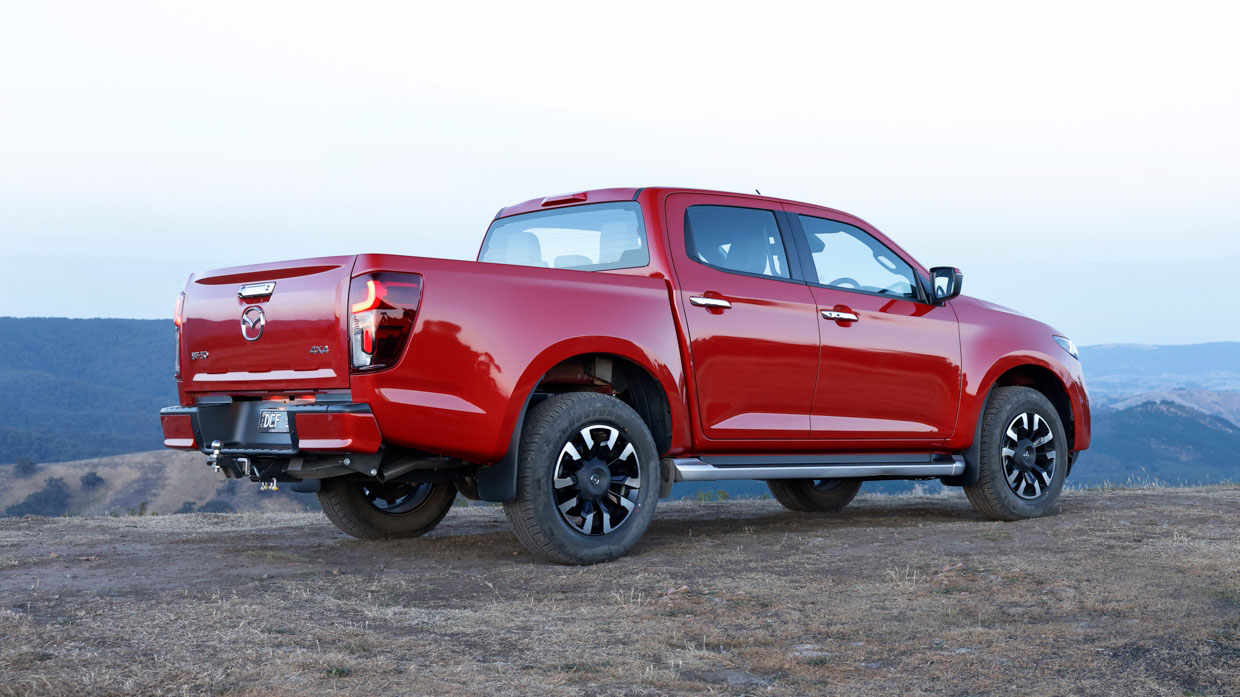
Pictured: the GT grade
It’s only a light refresh and pricing has increased across the board which could allow other competitors to encroach on the BT-50’s patch if it doesn’t offer solid value in the eyes of Australia’s fickle ute following.
As before, the Mazda BT-50 range is on offer in a range of single-cab, king-cab and dual-cab bodies, with choices of two and four-wheel dive and five variants depending on the body configuration.
Opening the line-up is the XS which is only on offer with rear-wheel drive, the smallest 1.9-litre diesel engine, and single-cab body resulting the most affordable BT-50 and a starting price of $36,400.
It was previously available with six-speed manual or auto but the manuals have been discontinued for the 2025 range with a subsequent price increase of $880.
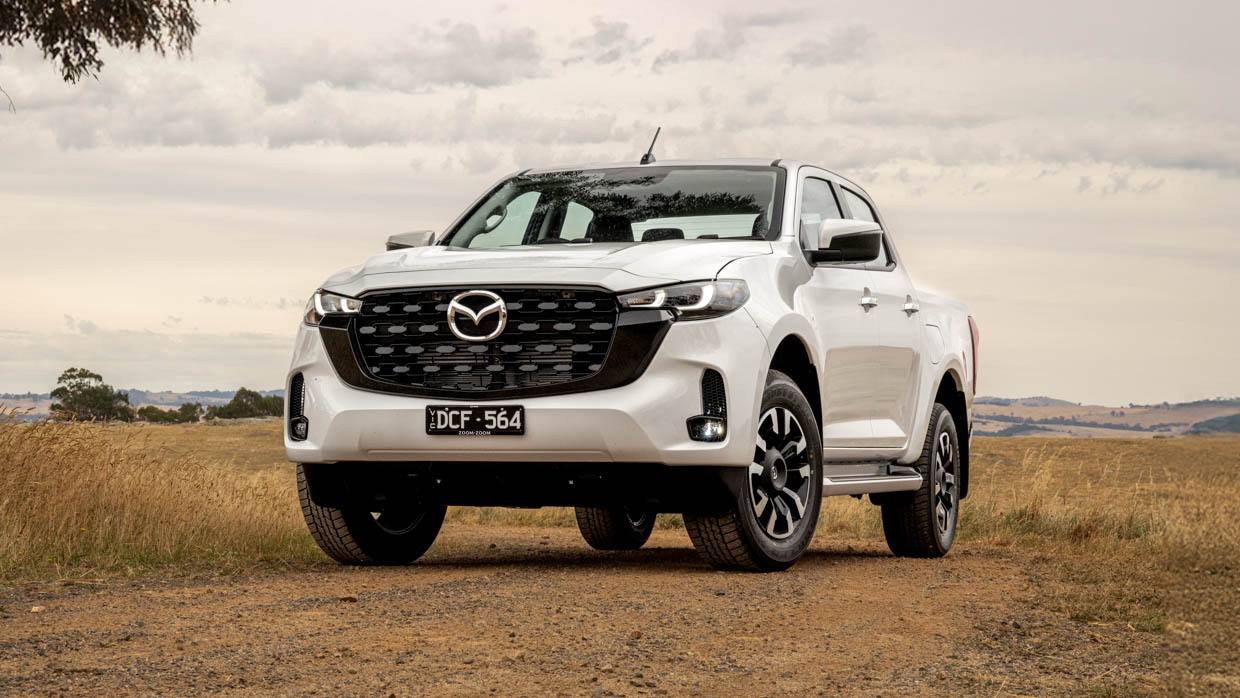
Pictured: the XTR grade
And those increases are common to all variants with the biggest variance found in the dual-cab line-up. The cheapest XT 4×2 cab chassis has the smallest increase of $550 now costing $46,610 while the 4×4 GT has risen by $3510 for an asking price of $66,170.
There are mid-pack options in the XTR grade from $53,790, while the top of the range SP is only available as 4×4 pick-up and, with a $2810 price increase, now costs $71,500.
That means Mazda’s flagship ute compares in price with popular options such as Ford’s Ranger in Sport trim and with a V6 diesel and 10-speed auto, while the Mazda has a four-cylinder and six-speed transmission.
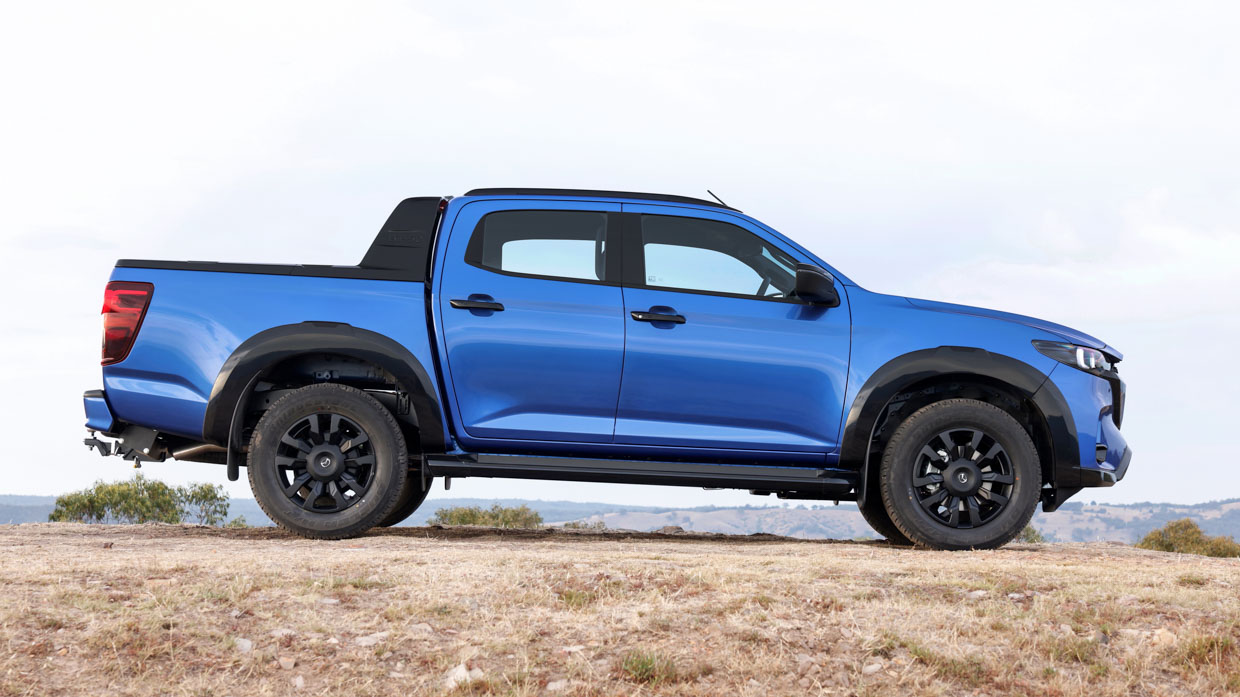
Pictured: the SP grade
Its interior has been given a light lift with both the 8.0-inch and 9.0-inch central touchscreen featuring a new operating system, while a 7.0-inch driver’s information display is offered in the higher-grade variants.
The new graphics and features are a welcome upgrade but the display size appears a bit dated compared with the Ford which gets a much larger portrait central screen and fully digital instrument cluster. XS and XT grades continue on with the skinnier 4.2-inch display between analogue gauges.
USB-C sockets replace the USB-A versions in front and rear seating completing the tech refresh, while the rear seats also get a folding armrest in dual-cab versions.
There are a dusting of other light interior changes depending on the variant, the most significant of which being the black leather now standard for the GT and a two-tone hide interior of the SP range-topper.
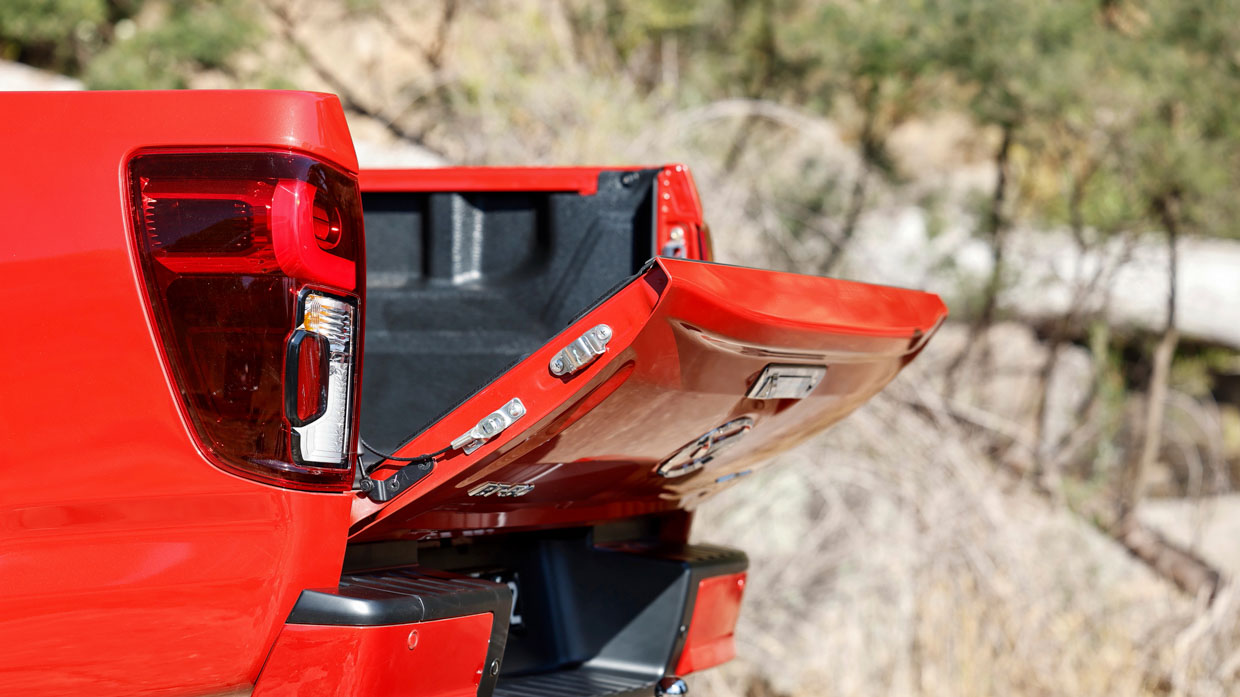
The really good news is that an exterior facelift has shaved years off the Mazda’s aesthetics and a completely redesigned front bumper with fresh LED headlights and taillights looks the business.
Other small changes include a damper added to the tailgate preventing the hatch slamming open, while more bold and enlarged Mazda badging fits with the new exterior looks.
Also, Android Auto users a now freed from the cable with wireless connectivity as has always been offered to Apple Carplay devices. Wireless charging can also be added as an option on all versions.
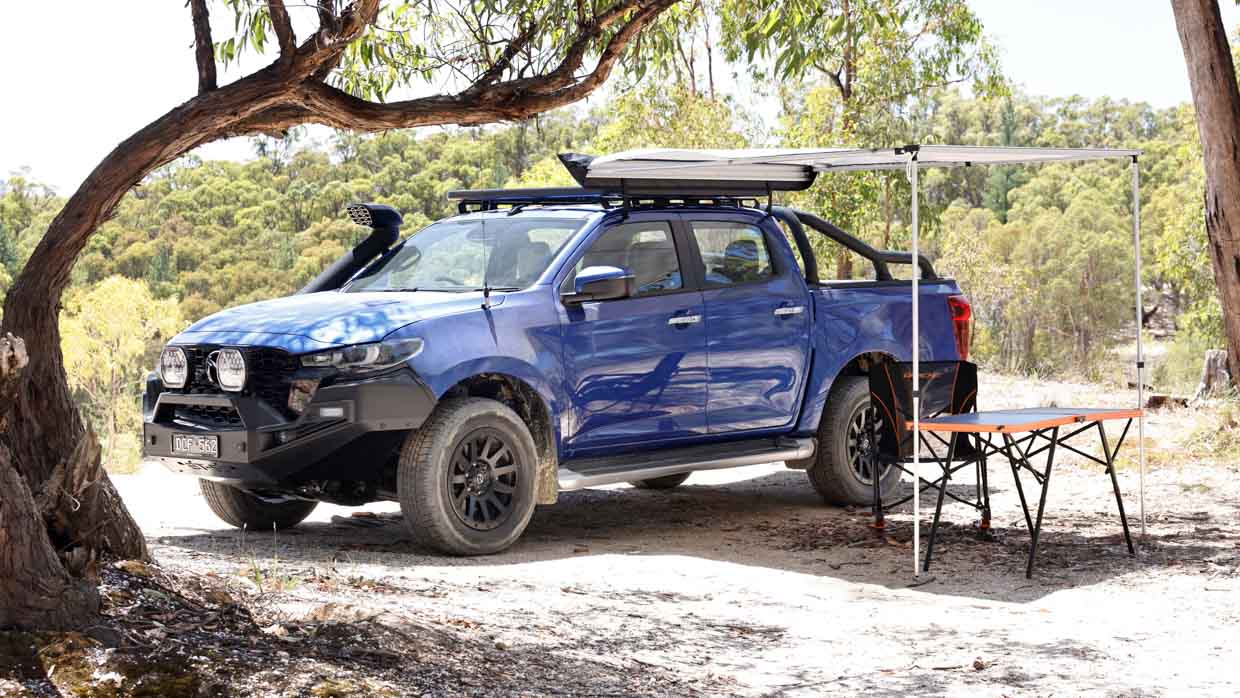
Rounding out the mid-life refresh is a comprehensive look at the BT-50’s safety systems including a new stereo front-facing camera (similar to Subaru’s long-standing Eyesight technology), a better grade rear-camera, introduction of traffic jam assistance and updates to many other existing driver assistance systems.
Even of there’s not something that quite fits from an equipment or specification level, Mazd is now offering a wide range of up to 100 original equipment accessories for customers to individualise their off-road rig.
The catalogue covers all the usual items including airbag-compliant roo-bar, tow bar and roof racks, all the way up to winch, suspension lift kits, side-steps and auxiliary electrical equipment from well-known and respected supplier partners.
With no changes introduced to the Mazda BT-50’s suspension, chassis or drivetrain for 2025, the update does not affect the way the model drives.
On the road, there’s the familiar dual-cab ladder chassis shudder over larger imperfections and bumps along with a ride that’s on the stiffer end of the spectrum but not uncommon in most comparable models.
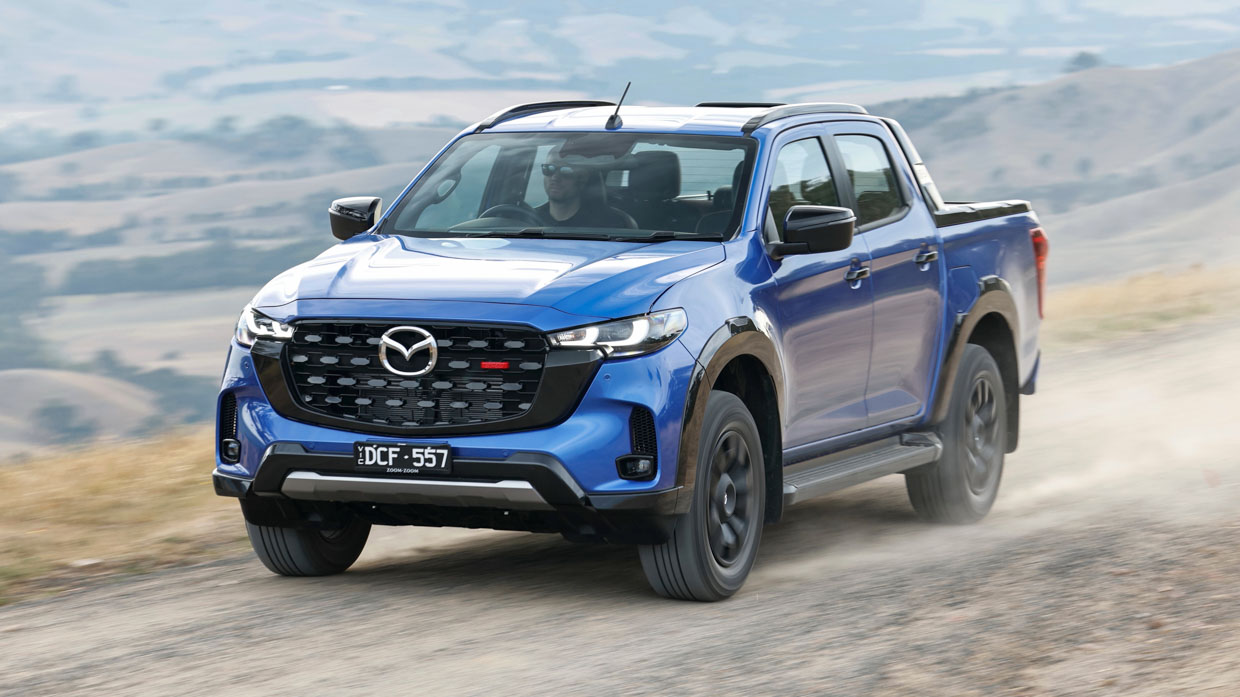
On average, the Mazda’s noise, vibration and harshness (NVH) levels are good while the 3.0-litre four-cylinder diesel settles down to a low background hum when cruising.
The six-speed automatic is still a decent performer and pairs well with the 140kW/450Nm four-cylinder. While many transmissions offer more ratios, the Mazda unit still works well with well positioned shift points and a hard-working nature that has just a little agricultural feel about it.
Pedalling along country roads is the BT-50’s natural habitat with positive steering and good road-holding but it’s just as competent when the road turns to gravel and more serious terrain.
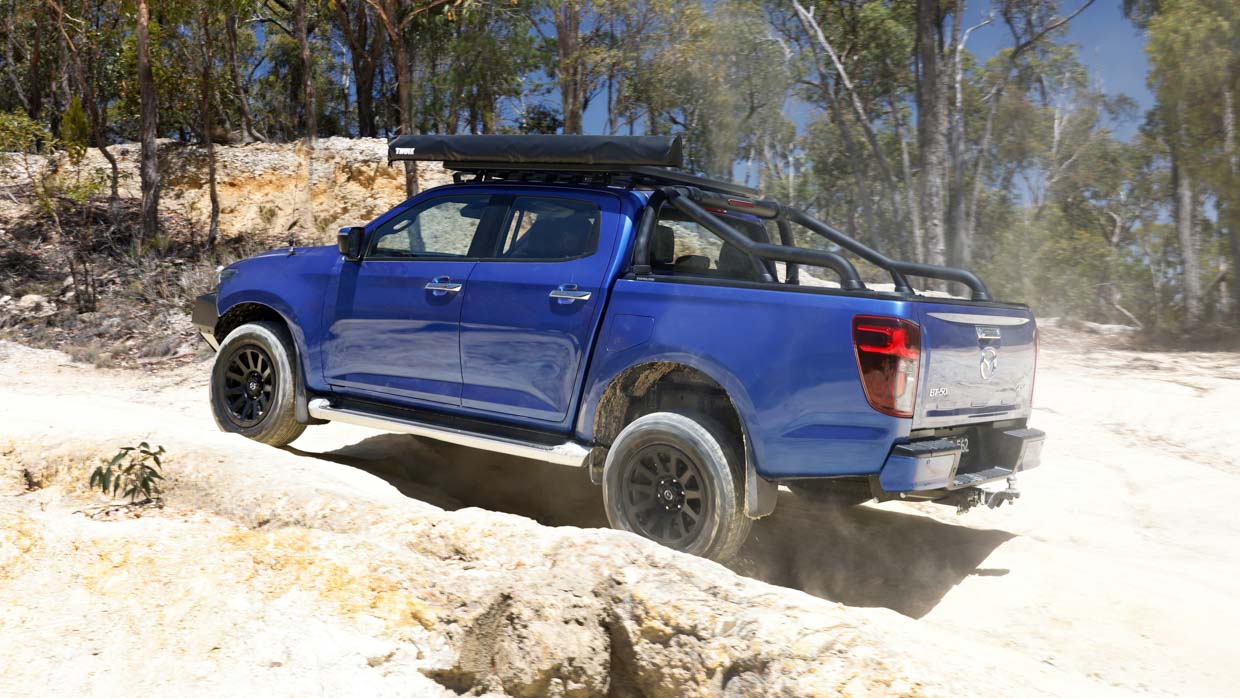
As before, the 3.0-litre diesel provides a smooth stream of torque via the automatic grab and switchable four-wheel drive and even with some reasonable climbing and rock-crawling, the low-range was never required – the same goes for its locking differential.
With the update, however, it’s easy to deliberately switch off driver assistance systems individually to prevent annoying and quite unnecessary warnings blaring at the occupants when foliage or trees encroach on the trail.
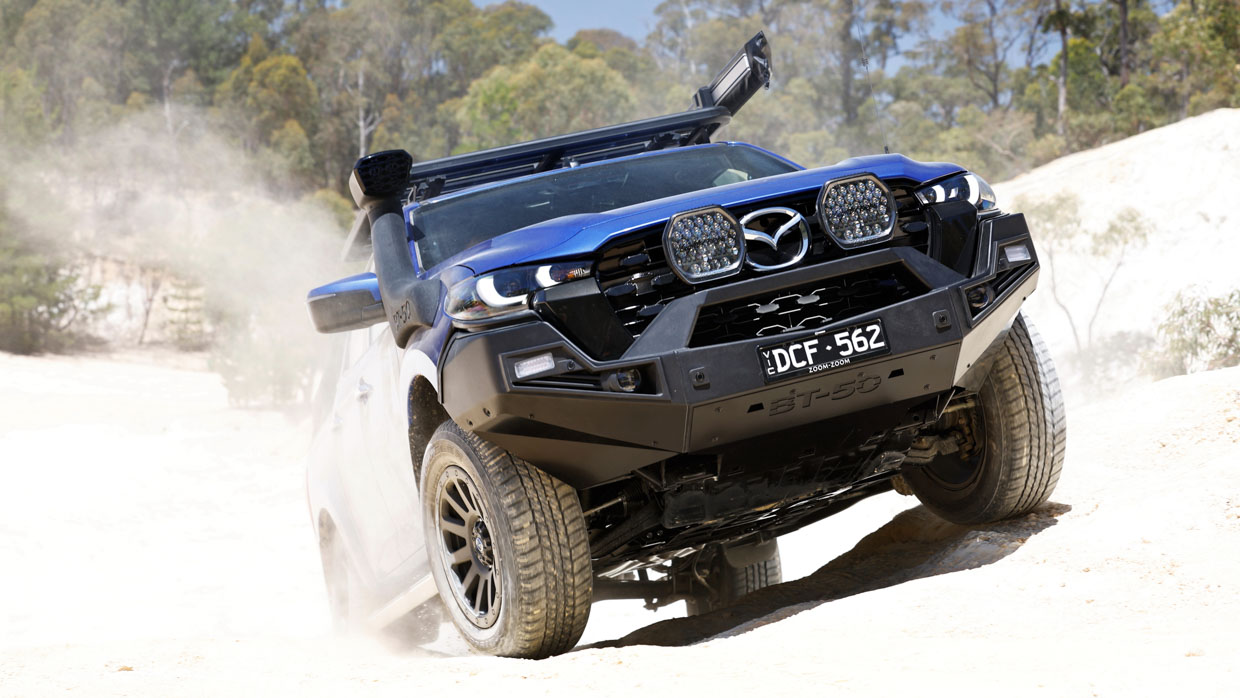
Importantly, the features remain in whichever mode they were when the vehicle is switched off, meaning off-roaders can pull up to a camp or view point and not have to repeat the entire pre-flight procedure before continuing.
Finally, the BT-50 shares a lot in common with the Isuzu D-Max including its manageable size. While many utes can feel cumbersome, the Mazda’s ergonomic steering wheel and sensible dimensions make it one of the easiest to live with on the trail and about town.
While models such as the GWM Cannon and Ford Ranger have since introduced models with refined interiors, the Mazda BT-50 continues to offer a cabin that feels among the most car-like in the market.
We particularly like the highly supportive seat-backs which feel almost racing-seat-like with excellent support for the shoulders, while the rear seats are also more comfortable than many dual-cab offerings which can feel bolt upright like a church pew.
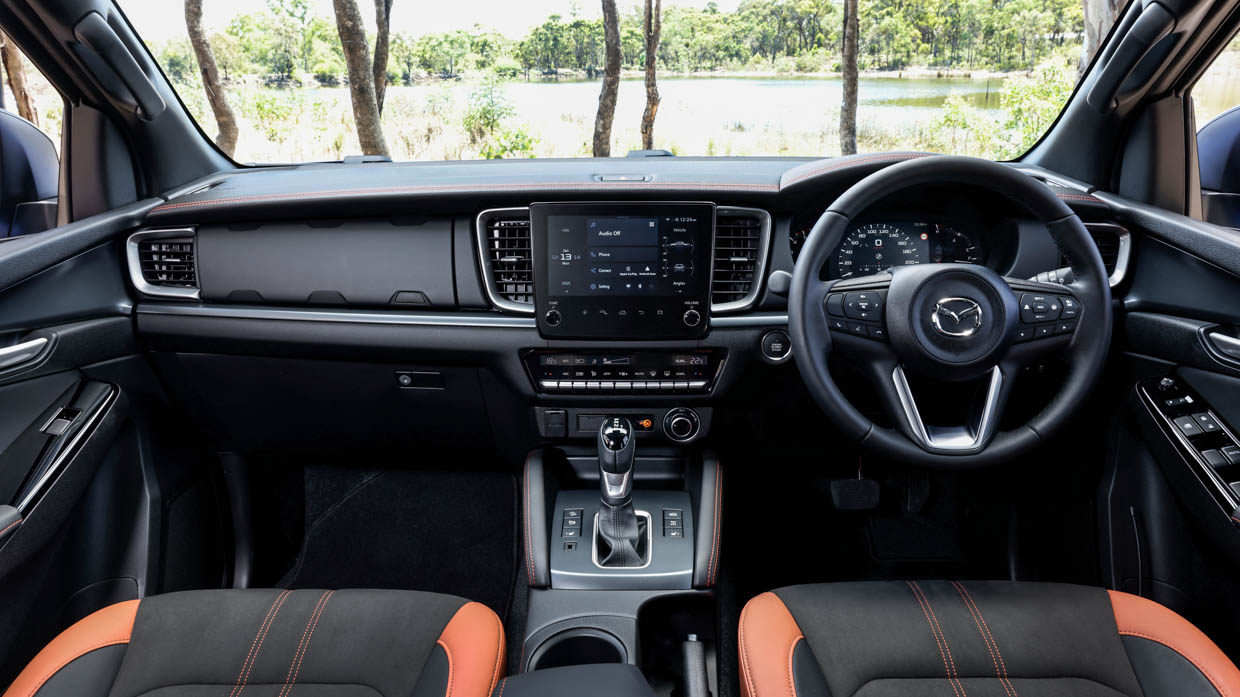
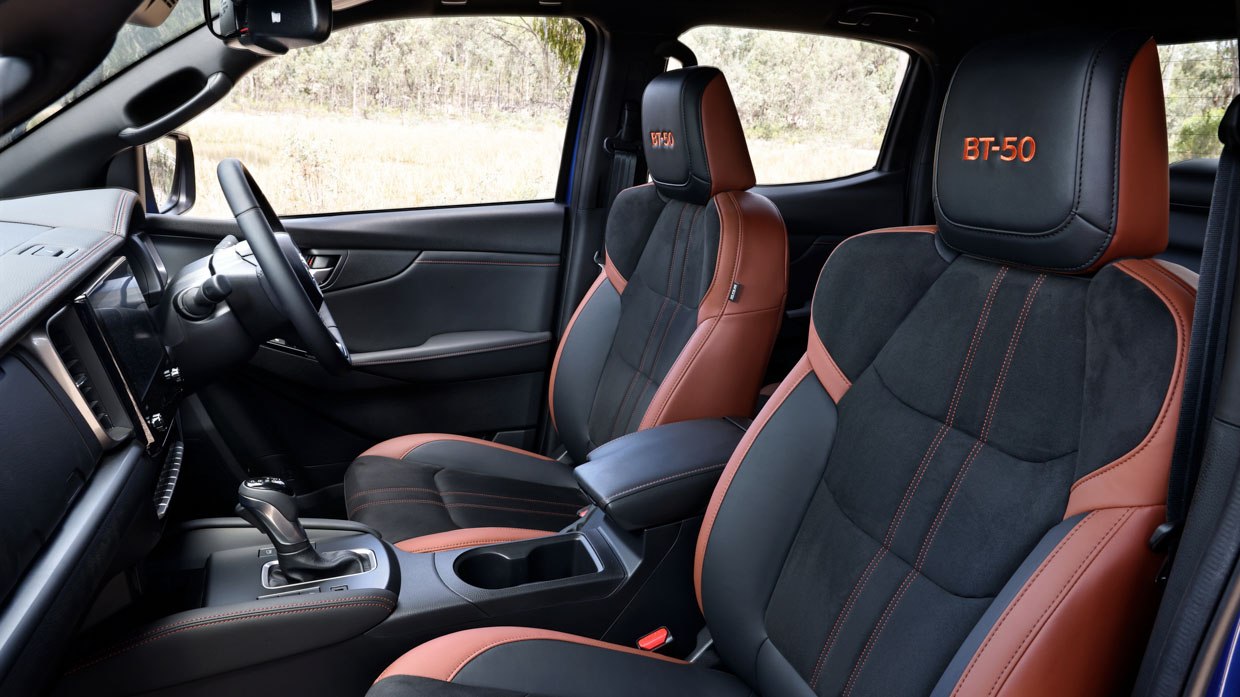
There’s little to indicate much of an interior update aside from a few matte black trims and new panels added to the dashboard, centre console and door trims, although the addition of a new USB C port near the rear-view mirror is a nice touch and allows the for the powering of dash-cams without cables cluttering the view.
A new operating system has certainly made the digital displays feel more contemporary and the functions are faster and sharper, but while some competitors offer increasingly large touchscreens, the Mazda’s feel on the small side.
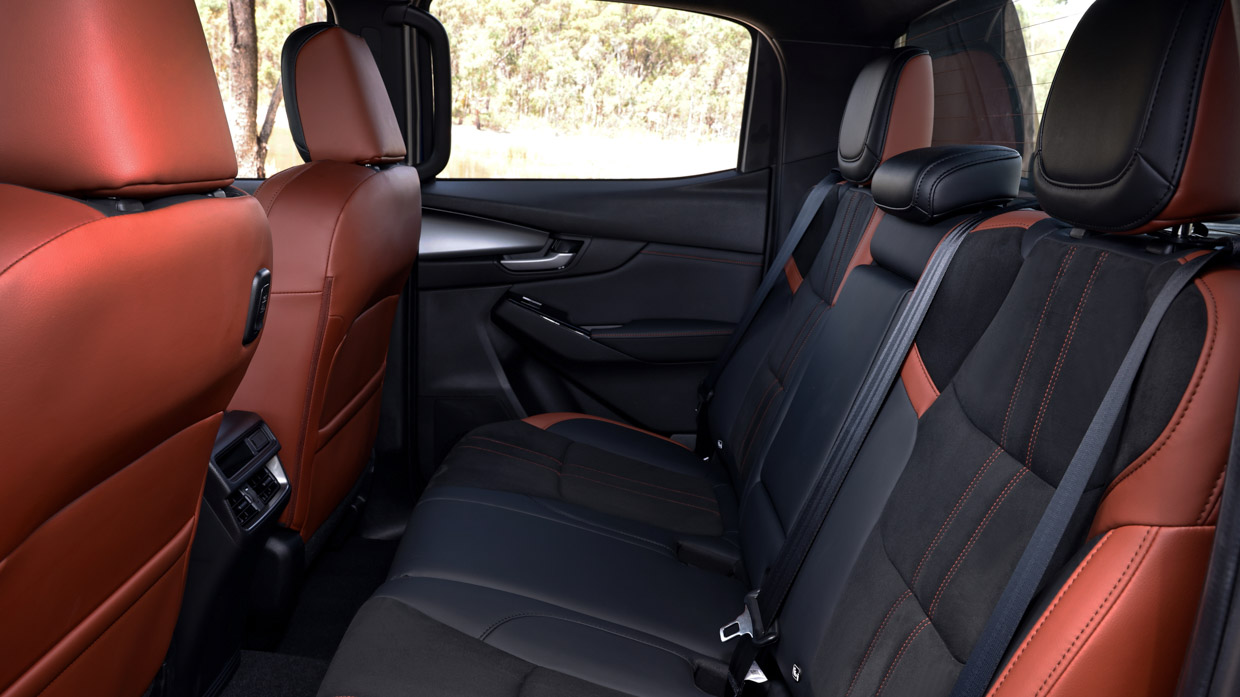
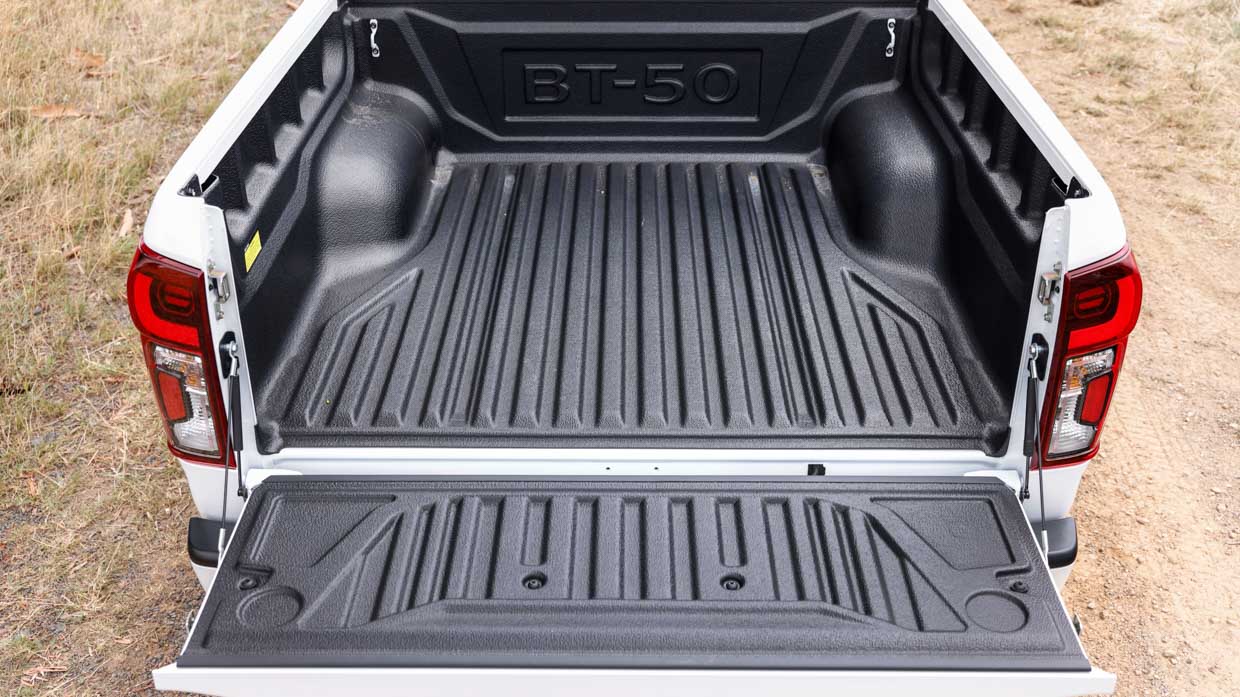
Ergonomically, the BT-50 does well too. While plus-sized utes continue to gain momentum on Australian roads, the Mazda’s cabin is the right size and has comfort and visibility advantages as a result.
Loading things into the back seat is not made tiresome by massive ground clearances and the generous load area is similarly easy to access.
When it launched in 2020, the Mazda BT-50 was awarded the full five-star safety rating by the Australasian New Car Assessment Program (ANCAP). The maximum score was in recognition of a comprehensive suite of safety features including autonomous AEB which wasn’t commonplace on utes until fairly recently.
However, with the 2025 update, Mazda has enhanced the existing safety tech including a new front stereo camera which boosts the field of view and depth perception, improving the sensitivity of AEB and forward collision detection.
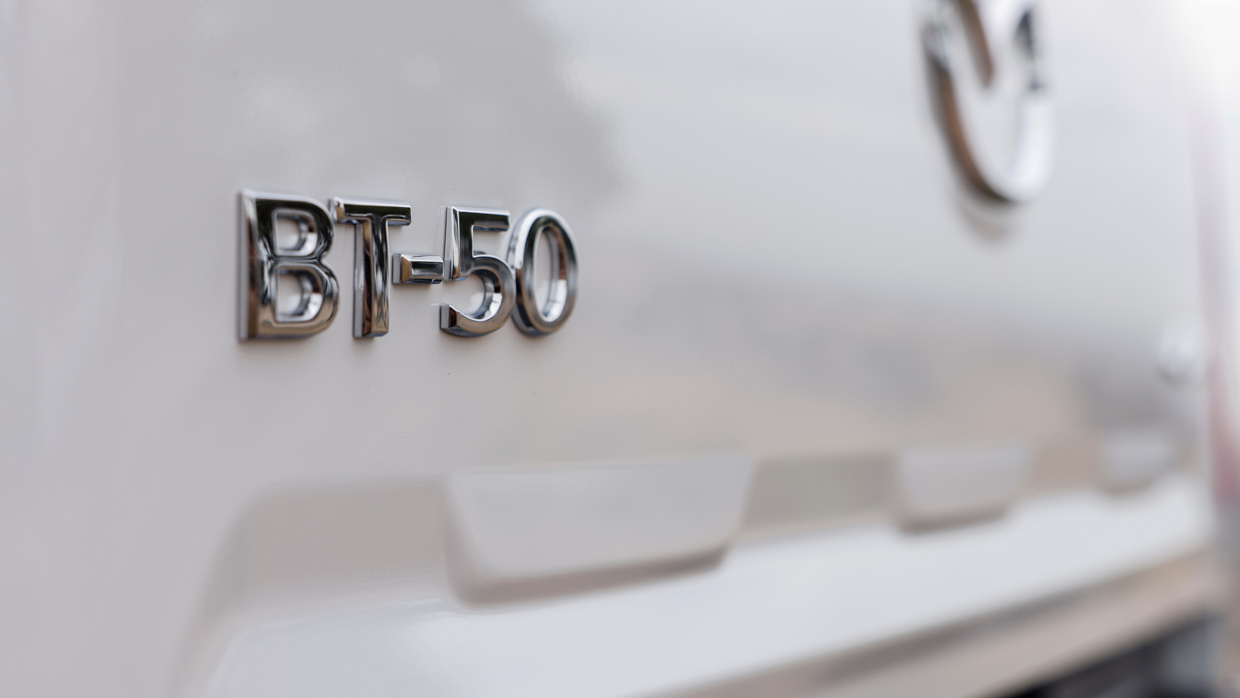
Mazda also reports ‘new capabilities’ have been incorporated into the blind-spot monitoring, rear-cross traffic detection, adaptive cruise control, traffic sign recognition and turn assistance, while the rear-view camera now gets dynamic turning lines to help with reversing manoeuvres.
While the BT-50 has a refreshed safety offering, an ANCAP rating is only current for six years so the current score will expire in 2026.
All Mazda vehicles in Australia are covered by a five-year, unlimited-kilometre warranty.
Servicing a BT-50 will cost $2496 over a five years. Intervals are scheduled every 15,000km, or every 12 months, whichever occurs first, which is about the industry average.
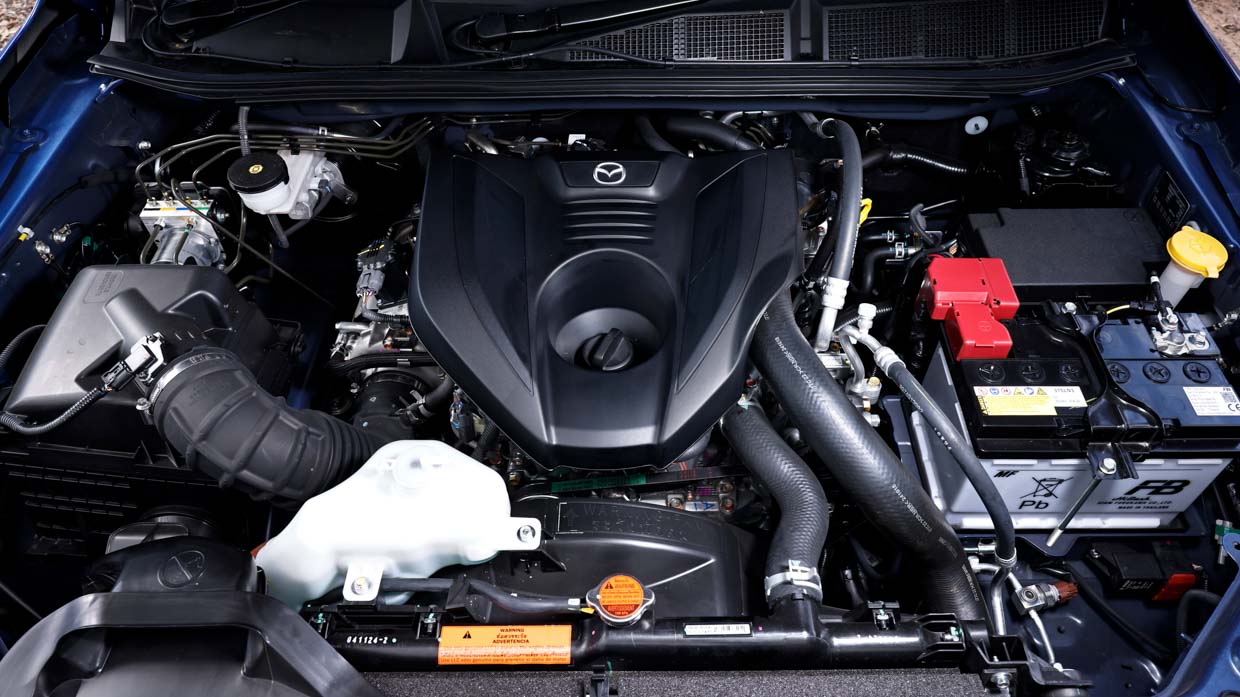
As far as fuel consumption goes, the Mazda is one of the more frugal one-tonners. The official claim is 8.0 litres per 100km, but during our cruisy time with the BT-50 it managed figures better than that.
However, as you may expect, off-road duties tend to drop below the claimed average.
The adage ‘if it aint broke…’ is not an expression that can often be applied to vehicle segments of any kind, least of all the ute market.
Such is the competition and the rapidity of advances in all brand model lines, a given dual-cab cannot afford to stand still for long, and the BT-50’s update comes at a good time – even if it’s on the light side.
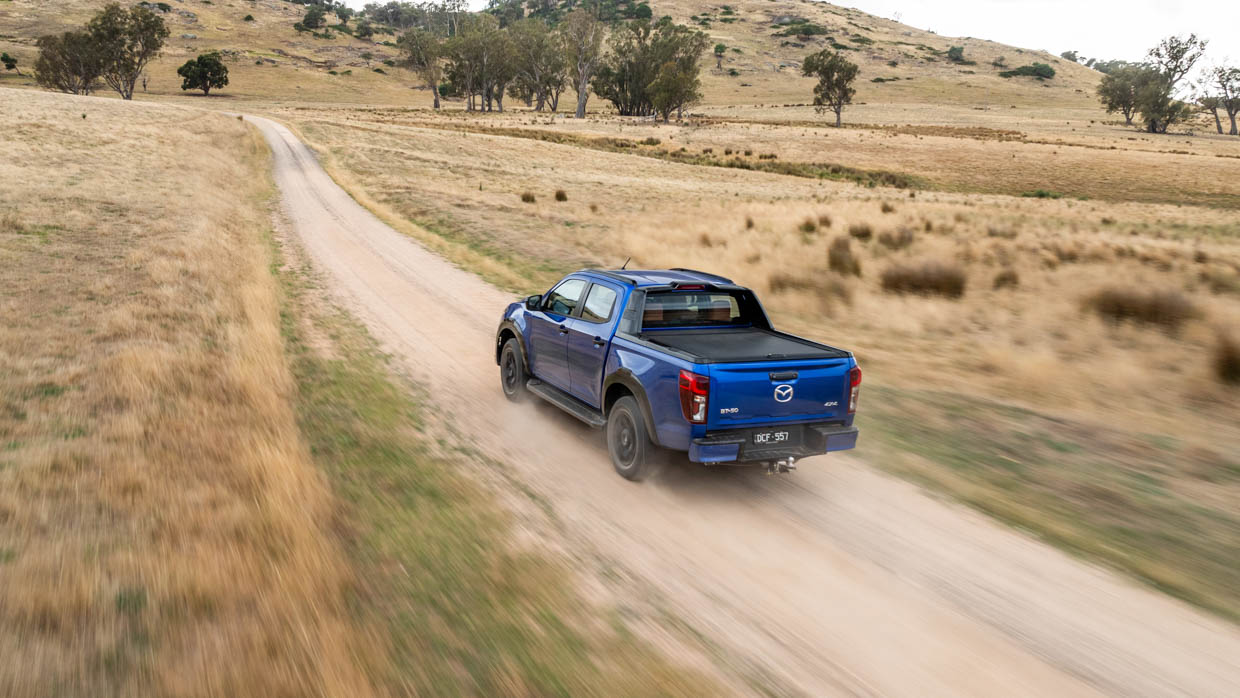
Mazda’s design team has done an excellent job lifting the exterior visual appeal without losing a family identity and a few technical updates have addressed items like smartphone mirroring and USB type but the screen sizes remain a little dated looking.
Importantly, safety has been given a boost and this will help to maintain the BT-50’s appeal especially as families continue to pick dual-cabs as the main vehicle in the household.
The BT-50 remains a great looking model with an impressive balance of on and off-road abilities, and a tempting list of factory accessories, but it all comes at a higher price, which may make some loyal customers start to explore other options.
Key specs (as tested)
About Chasing cars
Chasing Cars reviews are 100% independent.
Because we are powered by Budget Direct Insurance, we don’t receive advertising or sales revenue from car manufacturers.
We’re truly independent – giving you Australia’s best car reviews.
The estimate provided does not take into account your personal circumstances but is intended to give a general indication of the cost of insurance, in order to obtain a complete quote, please visit www.budgetdirect.com.au. Estimate includes 15%^ online discount.
^Conditions Apply
Budget Direct Insurance arranged by Auto & General Services Pty Ltd ACN 003 617 909(AGS) AFSL 241 411, for and on behalf of the insurer, Auto & General Insurance Company Limited(ABN 42 111 586 353, AFSL 285 571).Because we don’t know your financial needs, we can’t advise you if this insurance will suit you. You should consider your needs and the Product Disclosure Statement before making a decision to buy insurance. Terms and conditions apply.
Indicative quote based on assumptions including postcode , 40 year old male with no offences, licence suspensions or claims in the last 5 years, a NCD Rating 1 and no younger drivers listed. White car, driven up to 10,000kms a year, unfinanced, with no modifications, factory options and/or non-standard accessories, private use only and garaged at night.
^Online Discounts Terms & Conditions
1. Discounts apply to the premium paid for a new Budget Direct Gold Comprehensive Car Insurance, Third Party Property Only or Third Party Property, Fire & Theft Insurance policy initiated online on or after 29 March 2017. Discounts do not apply to optional Roadside Assistance.
2. Discounts do not apply to any renewal offer of insurance.
3. Discounts only apply to the insurance portion of the premium. Discounts are applied before government charges, taxes, levies and fees, including instalment processing fees (as applicable). The full extent of discounts may therefore be impacted.
4. We reserve the right to change the offer without notice.